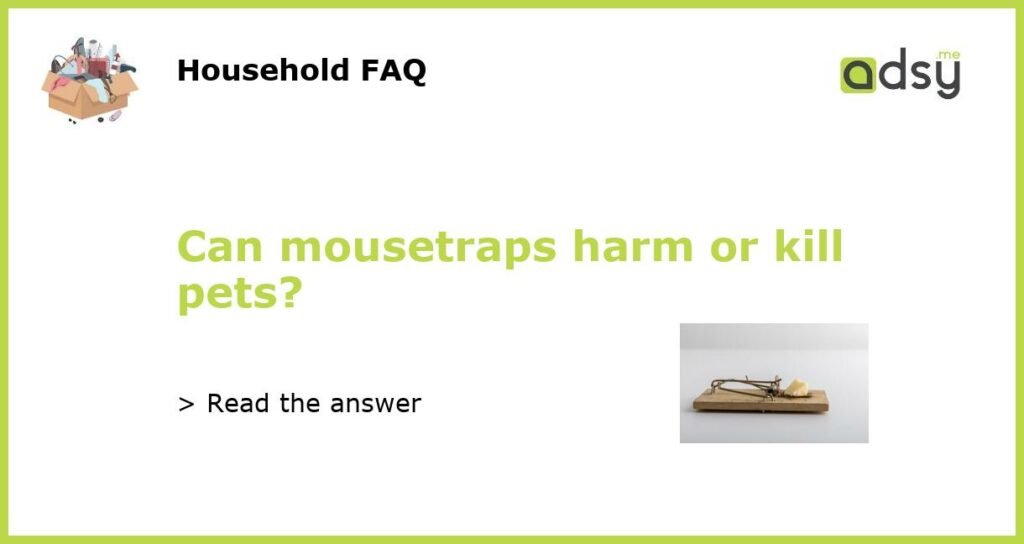What are mousetraps and how do they work?
Mousetraps are devices used to catch or kill mice. The most common type of mousetrap is the snap trap, which consists of a wooden or plastic base, a spring-loaded bar, and a metal wire trigger. When a mouse touches the trigger while trying to get the bait, the spring is released and the bar snaps down, killing the mouse instantly.
Other types of mousetraps include glue traps, which are coated with a sticky substance that traps the mouse, and electronic traps, which use a high voltage shock to kill the mouse.
Can mousetraps harm pets?
Mousetraps can pose a threat to pets if they are not placed and used properly. Most snap traps and glue traps are not designed to catch larger animals and can cause injury or death if a pet gets caught in them.
Pets can also be at risk of ingesting the poison used in some types of rodent baits, which can cause severe illness or death. Therefore, it is important for pet owners to take precautions when using mousetraps.
How to protect your pets from mousetraps?
To protect your pets from mousetraps, it is important to follow some basic guidelines. First, keep mousetraps out of reach of pets by placing them in areas that are inaccessible, such as behind furniture or in cupboards.
Second, use pet-safe mousetraps, such as live traps that capture the mouse without harming it, or bait stations that prevent pets from accessing the poison inside.
Third, monitor your pet’s behavior closely if you suspect they have come into contact with a mousetrap. Signs of injury or illness may include limping, difficulty breathing, drooling, vomiting, or lethargy.
Finally, seek veterinary care immediately if you suspect your pet has been injured or poisoned by a mousetrap.
What are some safe alternatives to mousetraps?
If you are concerned about using mousetraps around pets, there are several safe alternatives to consider. One option is to use natural deterrents such as peppermint oil, hot pepper flakes, or ultrasonic repellents.
Another option is to seal potential entry points in your home to prevent mice from entering in the first place. This may include sealing cracks and gaps in walls, doors, and windows, and keeping food stored in airtight containers.
Mousetraps can be effective at controlling mice, but they can also pose a risk to pets if not used properly. It is important for pet owners to take precautions when using mousetraps to protect their pets from harm. By following some basic guidelines and considering safe alternatives, you can keep your home rodent-free without putting your pets at risk.






